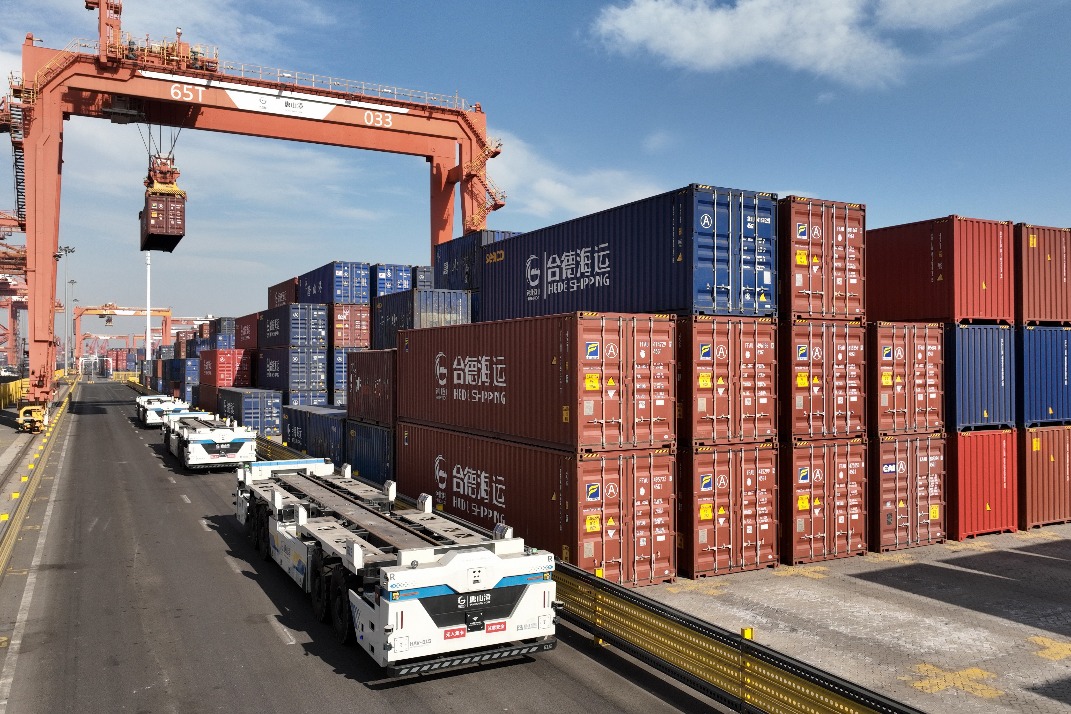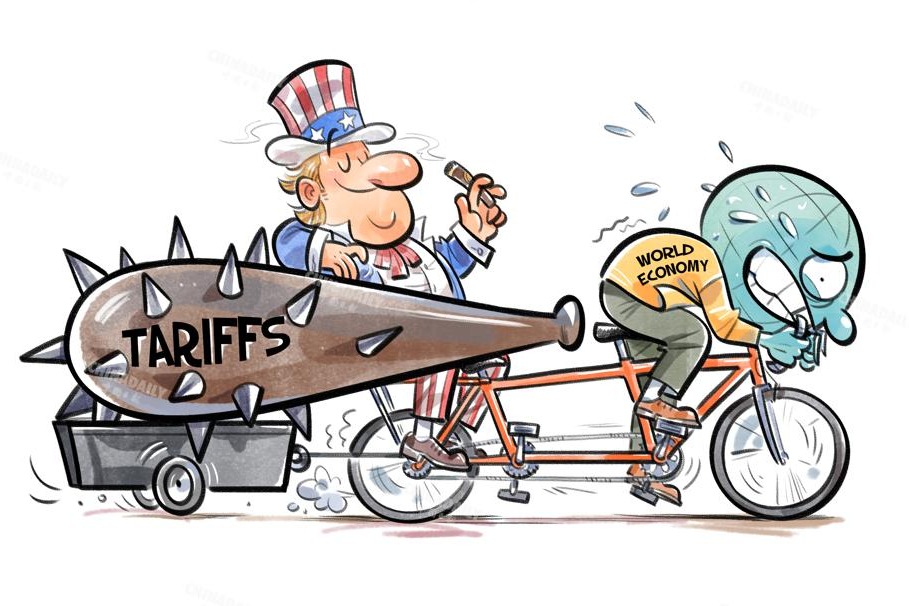Chinese investors chase Indian startups
By Cheng Yu | China Daily | Updated: 2020-02-03 07:02

Venture capital firms, private equity players, tech giants ... all vie for dollops of tech curry
Geographically, China and India may be separated by the mighty Himalayas, but two-way capital flows and investments between the two massive Asian economies seem to have found a super highway above the Mount Everest, as if to clear every conceivable hurdle.
Take, for instance, ShareChat, a startup that offers a social media platform in as many as 15 Indian languages. Its latest $100 million funding round in August 2019 attracted seven leading global investors such as Twitter, but was co-led by Shanghai-based Trustbridge Partners, and included two other Chinese venture capital firms of Shunwei Capital and Morningside Venture Capital.
The funding round came just six months after ShareChat had raised funds from Chinese smartphone maker Xiaomi as well as Shunwei.
But that is hardly a surprise, given the "record-breaking" investments in Indian startups in recent years by Chinese investors from the venture capital and private equity fields.
Consequently, US investors no longer dominate the Indian market. In the first half of 2019, Indian startups raised around $3.9 billion from global investors. Chinese heavyweights accounted for the bulk of investments, according to finance research firm Venture Intelligence.
Tracxn, which tracks investments and other variables in the Indian startup ecosystem, said Chinese venture capital firms pumped in $5.6 billion in India in 2018. And that was a fivefold rise over 2016, and surpassed US and Japanese investments in India.
"Changes in the global economic landscape are one of the reasons behind such a trend. Faced with trade frictions, a large number of capital needed to find new investment opportunities," said Jixun Foo, managing partner of GGV China, a venture capital firm based in Shanghai, and a top investor on Forbes' Midas List.
"Also, the global supply chain is being reshaped, as reflected by tech giants like Samsung and Intel moving their factories to emerging countries. The reshaping will also accelerate the economic development of these markets," Foo said.
Other investors value the similarities between the neighboring countries-the only two economies in the world with a billion-plus population each, continent-size landmass and, of course, huge business potential.
"The Indian market may appear somewhat disorderly on the surface, but vibrant opportunities are ready to burst forth," said Cheng Yu, partner of Morningside Venture Capital.
"The Indian market now is like what China was several years back, when the mobile-based access to the internet boomed. The number of internet users in India skyrockets every time a new product is launched here," Cheng said.
According to Tej Kapoor, managing partner and head of Fosun Kinzon Capital, India's top internet-based companies love Chinese capital, not just because Chinese investors are flush with cash but also because their understanding of the Indian market is deeper compared to their counterparts from other countries.
"European and American investors typically play the Indian stock market, while only Chinese investors care about data, including daily and monthly active users," Kapoor said.
India's younger generation have leapfrogged the PC age and are sprinting into the mobile internet era, which brings tremendous opportunities for investors, said Geng Yixue, vice-president of Shunwei Capital. Over the last two years, Geng has traveled to India every month to meet local companies and clinch potential deals.
In 2016, Reliance Jio, which is now India's largest telecommunications provider, launched 4G services, and promptly announced free internet data for half a year, as part of its customer-acquisition drive. In one stroke, the move made 4G networks accessible to almost everyone in a market comprising more than a billion consumers, sparking a frenzy for smartphones.
Incidentally, Chinese smartphone brands such as Xiaomi, Vivo, Oppo, Huawei and OnePlus dominate the market where global giants such as Apple, Motorola, Nokia, Sony and Samsung had never found the going easy.
On the software and content side, the rapidly developing Indian mobile internet market has spawned several local digital assets in e-commerce, digital payments, services, news and entertainment, some of which grew into brand-strong tech unicorns, or startups with a valuation of more than $1 billion each.
For instance, online shopping brands Flipkart and Snapdeal are considered Indian equivalents of Alibaba, JD and Amazon; and Zomato is the Indian equivalent of Meituan-Dianping, Geng noted.
India, however, is yet to have a homegrown online search engine like Google or Baidu. Unlike China that boasts domestic social media like WeChat and Weibo, Indian netizens are big on Facebook, Twitter and WhatsApp. But China's Bytedance has hit pay dirt in India through its short-video sharing app TikTok.
"On the one hand, Indian consumers are dying for different apps brought by the mobile internet. On the other, there are 300 to 500 million people who aren't getting stable and uninterrupted access to the internet," said Geng.
But, to treat this as a problem would be a folly because the other side of the coin is that the situation represents a potential gold mine as it has immense potential for development and future growth, he said.
Geng's views are shared by Foo from GGV who said India is among the most engaged mobile internet regions in the world with the sector accelerating to be more and more mature.
Currently, Chinese venture capitalists including Hillhouse Capital, Shunwei Capital, Morningside Venture Capital and Fosun Kinzon Capital are actively investing in Indian companies in sectors like retail, social media, and the internet of things. Chinese corporate icons such as Alibaba Group, Tencent Holdings and Xiaomi Corp are also vying for slices of the Indian tech pie.
Shunwei Capital, which was established by founder of Xiaomi Lei Jun and Tuck Lye Koh, has invested in over 20 projects in India, including food-delivery unicorn Zomato, commerce platforms Meesho and Cashify, and fintech startup Krazybee.
"Shunwei is going big on sectors like social media and content, online tech and e-commerce, as well as consumption sectors," said Geng.
According to him, Beijing-based venture capital firms have invested at least $100 million in the Indian market so far, with most focused on early investments.
GGV China, which has been looking at the Indian market for years now, has recently made its very first investment in Udaan, a local business-to-business, or B2B, platform.
"New Retail is a sector that GGV pays special attention on," said Foo from GGV. "In India, where most neighborhood grocers and the like are small 'mom and pop' operations, New Retail has huge potential. Tech companies can help these small shops to digitalize their operations."
New Retail refers to the integration, or interlinking, of online and offline shopping using modern technologies, data and customer engagement techniques, a discipline where Chinese firms have gathered a certain level of expertise.
The term was coined in 2016 by Alibaba's charismatic founder Jack Ma. In his words, New Retail is making the distinction between physical and virtual commerce obsolete. It indicates a combination of the best in physical and online retail.
In October last year, Chinese President Xi Jinping met with Indian Prime Minister Narendra Modi in India, where both agreed to promote exchanges and mutual learning to achieve joint development and prosperity.
India and China have both become important emerging economies to each other, Modi said at that time, stressing that enhancing exchanges and cooperation bears great significance to the two countries.
The meeting in South India nevertheless lifted China-India relations to a new high, and industry insiders said they expect India to attract more Chinese investments from this year on.
Such optimism stems from the fact that bilateral trade between China and India reached 639.5 billion yuan ($93.5 billion) last year, up 1.6 percent year-on-year, according to the data of China's customs.
"The Modi government has made every endeavor to implement initiatives for the decentralization and integration of India's social and economic systems. This integration completely disrupts the business models of companies that had profited from inefficiencies of the past," said Guo Ruyi, managing partner, China TH Capital.
"As the old order based on inefficiencies is getting disrupted, new opportunities to scale up from serving a national market are emerging, which will give global investors the chance to participate in high-growth sectors of the India economy."
However, Guo noted that investing in India comes with challenges like cultural differences. Agreed Geng from Shunwei. The diverse local administrations of India present a number of challenges to the development of mobile internet services, he said.
"For purely online businesses, all internet services and apps based on the English language can only reach around 100 million elite users. Another seven language versions are needed to cover 70-80 percent of the Indian population, with the remaining 'long-tail' part of the population still unreachable with other language versions," he said.
For businesses where offline services are involved or what the Indians call omni-channel services, even if the business model has been proven in one local market, replicating the model elsewhere will remain challenging, Geng said.
























